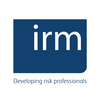In the dynamic landscape of today's business environment, mastering risk is paramount to success. Effective risk management is not just a reactive strategy; it's a proactive process that involves meticulous planning, assessment, and mitigation. In this blog, we will navigate the roadmap of the process of risk management, with a special focus on Level 1 risk assessments—an essential step towards mitigating potential hazards and optimizing opportunities.
Understanding the Process of Risk Management
1. Risk Identification
The journey of risk management begins with identifying potential risks. This involves a systematic examination of internal and external factors that could impact an organization's objectives. Risks can manifest in various forms, such as financial, operational, compliance, strategic, and reputational.
2. Risk Assessment
Once risks are identified, the next step is to assess their potential impact and likelihood. This is typically done through a risk matrix, which classifies risks based on their severity and probability. Risks are categorized as high, medium, or low, allowing organizations to prioritize their focus.
3. Risk Mitigation and Control
With a clear understanding of the risks at hand, organizations can then develop strategies to mitigate or control them. This may involve implementing internal controls, insurance coverage, or contractual agreements that transfer risk to third parties. The goal is to reduce the likelihood of risk occurrence or minimize its impact if it does occur.
4. Monitoring and Reporting
Risk management is an ongoing process. Continuous monitoring of risk indicators and key risk metrics is crucial to ensure that risk mitigation strategies remain effective. Regular reporting to stakeholders, including executives and board members, keeps everyone informed about the status of risk management efforts.
5. Risk Review and Adjustment
As the business landscape evolves, so do risks. Regular reviews of the risk management process are essential to adapt to changing circumstances. Organizations must be agile in identifying new risks and adjusting their strategies accordingly.
The Significance of Level 1 Risk Assessments
Level 1 risk assessments, also known as preliminary risk assessments, serve as the foundational step in the risk management process. Here's why they are significant:
1. Early Risk Detection
Level 1 risk assessments allow organizations to detect risks at an early stage. This is critical because identifying risks in their infancy provides a greater opportunity for effective mitigation. Early detection can prevent risks from escalating into major crises.
2. Holistic Understanding
These assessments provide a holistic understanding of an organization's risk landscape. By examining various risk categories, organizations can comprehensively assess the factors that could impact their objectives. This comprehensive view ensures that no significant risk is overlooked.
3. Informed Decision-Making
Level 1 risk assessments equip decision-makers with the information needed to make informed choices. By knowing the potential risks, organizations can make strategic decisions that align with their risk tolerance and objectives.
4. Resource Allocation
With a clear picture of risks, organizations can allocate resources effectively. This includes budgeting for risk mitigation measures, adjusting staffing levels, and determining the allocation of insurance coverage.
Conclusion: Navigating the Risk Management Roadmap
In the journey of mastering risk, the process of risk management is the roadmap that guides organizations towards their destination of success. Level 1 risk assessments, as the initial step in this process, play a vital role in setting the course.
By identifying risks early, gaining a holistic understanding of the risk landscape, informing decision-making, and optimizing resource allocation, Level 1 risk assessments empower organizations to navigate the complex terrain of risk with confidence. They are not just a preliminary step; they are the foundation upon which effective risk management strategies are built.
In today's world, where uncertainty and volatility are constant companions, organizations that master the process of risk management, beginning with Level 1 risk assessments, are better equipped to withstand challenges, seize opportunities, and ultimately, achieve their objectives. They understand that risk is not a roadblock; it's a signpost on the journey to success, and with the right roadmap, they can navigate it with skill and precision.

No comments yet